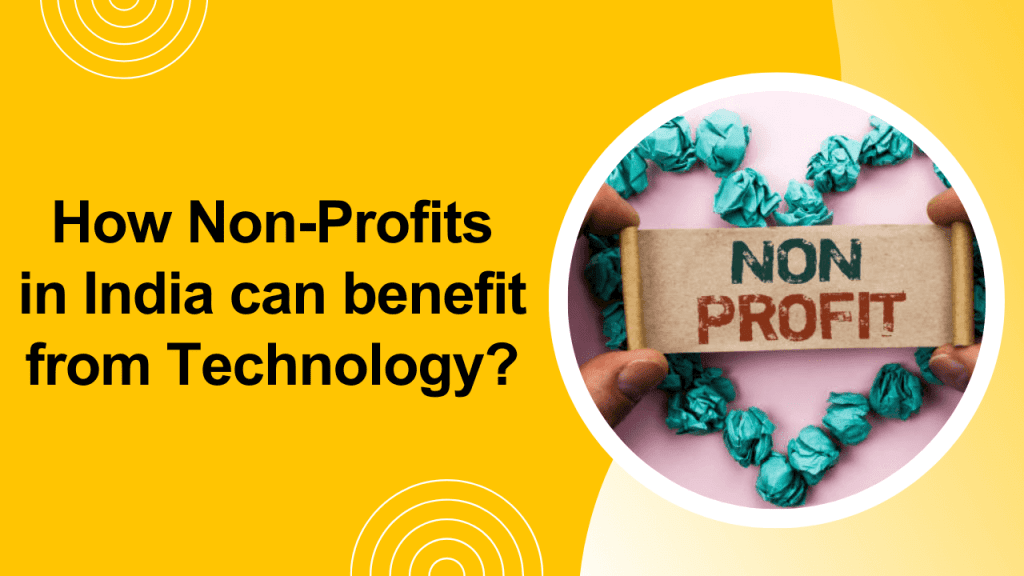In this blog we will explore the changing power of technology in the sector of Indian non-profit. The world which is driven by innovation, it is now important for organizations to utilize the capacity of digital tools and strategies to maximize their impact.
The fundraising campaigns reach out to millions of peoples. Technology has become an essential supporter for those who wants to create a positive change in India. So, read the blog till the end us as we will discuss about how technology is revolutionizing the non-profit and how it can unlock possibilities for social good.
Introduction to the Non-Profit Sector in India
The non-profit organization in India act as a important part in solving various social, economic, and environmental issues faced by the people of our country. India ranks among the top ten countries in charitable giving, illustrating the generosity and compassion of its people.
Non-profit organizations, also known as non-governmental organizations (NGOs) or charities, that operates for the improvement of society and that to without any profit motive. These organizations provide services and support the marginalized communities. They also advocate for human rights, promote education and health.
NGOs have a long-standing history in India from pre-independence times. And the best part is today, there are over three million NGOs across the whole country which are working on various sectors such as education, health, child welfare, women empowerment, etc.
However technology have helped NGOs to reach out to a millions of audience through digital platform. Although marketing like direct mail campaigns has also allowed them to knock into the potential audienc online. Crowdfunding platforms, making it even easier for individuals to support their noble causes.
Additionally, technology has also helped the NGOs to improve their efficiency by automatization processes and using data analytics for better decision-making. And as a result this has reduced administrative costs. With that it has also increased transparency in fund utilization, building donor trust.
The Role of Technology in Fundraising
The use of technology has become an integral part of all non-profit organozastions, especially when it comes to fundraising. With the rise of online platforms, organizations can now reach to a wider audience and potential donors efficiently.
Non-profits in India are now using different digital tools such as email marketing, social media, and crowdfunding platforms to get in touch with potential donors globally. Apart from growing the network, it also help the donors to contribute to a cause they are passionate about.
Moreover, technology made the donation process much more easy for donors. With online payment options, donors can make payments just through a few clicks. This led to an increase in donations.
Another major part of technology in fundraising is data analysis. Using technology tools such as donor management systems and analytics software, non-profits are now able to gather information about their donors’ preferences, interests, and giving patterns. This data can be used to create campaigns that can ultimately increase the chances of getting more donations.
Challenges and Solutions in Adopting Technology for Non-Profits
Technology has increased the effectiveness and efficiency of non-profits, and has also helped in facing various challenges. So, lets discuss some of the major challenges which non-profits are facing with their solutions to overcome them.
- Limited resources: It is One of the major challenges faced by non-profits. As the non-profits often operates on tight budgets, making it difficult to invest in expensive technologies.
Solution: The solution for this challenge is use tools and platforms that are freely available. Additionally, non-profits could take help with tech companies for funding and helps.
- Resistance to change: Another challenge in adopting technology is employees may be hesitant to use new technologies due to fear of lack of understanding about how these tools can benefit their work.
Solution: To address this challenge, it is important for organizations to educate their staff about the benefits of implementing technology.
- Lack of infrastructure: In some parts of India stable internet connectivity is still a major issue. This is a significant barrier as most modern technologies require an internet connection.
Solution: Non-profits can explore alternative options such as mobile apps that can be downloaded offline or satellite-based internet setups where traditional networks are unavailable.
- Data privacy concerns: With increased digitization data privacy and security became a threat for both donors and NGOs. Non-profits need to make the protection of personal information and sensitive data collected through technology.
Solution: Applying strong data security measures can alleviate these concerns. The non-profit sector must also clearly communicate its privacy policies to stakeholders.
Conclusion
There are tremendous potentials for technology in the Indian non-profit sector, and it has already transformed fundraising methods and enhanced impact assessment practices. With the right tools and strategies, non-profit organizations can pull technology to its maximize reach.
Adopting technology is not a choice but its a necessity for non-profits in India. The use of online platforms for crowdfunding has opened up new ways for fundraising and has opened doors to campaigns or events. As a result of this shift towards digital platforms, organizations can now reach a broader audience beyond their geographical borders.
Related Posts:
Old age home in Indore , A place for homeless people
Online Donation For Old Age Homes
Advantages & Disadvantages of Old Age Homes


I have a great command of sophisticated language and literature because I am an artist at heart as well as a writer by profession. I am able to constantly produce work of a high quality because of my knowledge. I’m well-known for my versatility and am an excellent writer of both creative and technical content. To write content that is both entertaining and customized, I take the approach of getting to know the interests and preferences of my targeted audience.

